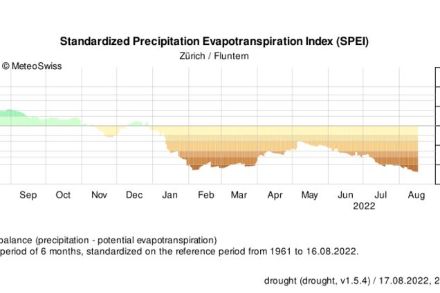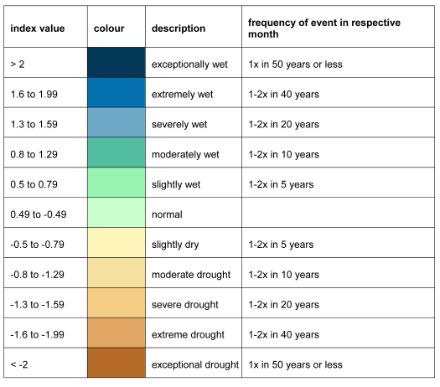Precipitation and water balance anomaly
The three indices of SPI, water balance and SPEI show the deviations of precipitation amount or water balance from the long-term average over a given period of time.
Standardized Precipitation Index (SPI)
The SPI describes the extent to which the precipitation amount has deviated from the long-term average in the past month or over a longer period of time. By calculating the SPI over different time periods (1, 3, 6 and 12 months), the water deficit can be described for a range of time scales. This is very useful information, since the impacts of drought depend heavily on how long it lasts. For example, vegetation (and therefore agriculture) is sensitive to water deficits that continue for more than 1–3 months. The impacts on the water supply and power generation sectors generally come into play after longer periods of drought.
The water balance
The water balance is defined as the difference between precipitation amount and potential evapotranspiration. In this case, evapotranspiration is dependent exclusively on meteorological variables (temperature, humidity, wind and radiation). The water balance calculated from precipitation and potential evapotranspiration is therefore also called the meteorological water balance. A positive value indicates that more water fell as precipitation than evaporated into the atmosphere over the period in question. This is an absolute number, in contrast to the SPEI indicator (see below).

